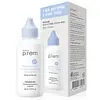What's inside
What's inside
 Key Ingredients
Key Ingredients

 Benefits
Benefits

 Concerns
Concerns

No concerns
 Ingredients Side-by-side
Ingredients Side-by-side

Water
Skin ConditioningGlycerin
HumectantButylene Glycol
HumectantEthylhexyl Palmitate
EmollientCetyl Ethylhexanoate
Emollient1,2-Hexanediol
Skin ConditioningSorbitol
HumectantPanthenol
Skin ConditioningPolyglyceryl-10 Oleate
Skin ConditioningCeramide NP
Skin ConditioningMadecassoside
AntioxidantAnthemis Nobilis Flower Extract
MaskingCarbomer
Emulsion StabilisingHydrogenated Lecithin
EmulsifyingTromethamine
BufferingDipropylene Glycol
HumectantEthylhexylglycerin
Skin ConditioningCetearyl Olivate
Disodium EDTA
Sorbitan Olivate
EmulsifyingCaprylic/Capric Triglyceride
MaskingWater, Glycerin, Butylene Glycol, Ethylhexyl Palmitate, Cetyl Ethylhexanoate, 1,2-Hexanediol, Sorbitol, Panthenol, Polyglyceryl-10 Oleate, Ceramide NP, Madecassoside, Anthemis Nobilis Flower Extract, Carbomer, Hydrogenated Lecithin, Tromethamine, Dipropylene Glycol, Ethylhexylglycerin, Cetearyl Olivate, Disodium EDTA, Sorbitan Olivate, Caprylic/Capric Triglyceride
 Reviews
Reviews

Ingredients Explained
These ingredients are found in both products.
Ingredients higher up in an ingredient list are typically present in a larger amount.
1,2-Hexanediol is a synthetic liquid and another multi-functional powerhouse.
It is a:
- Humectant, drawing moisture into the skin
- Emollient, helping to soften skin
- Solvent, dispersing and stabilizing formulas
- Preservative booster, enhancing the antimicrobial activity of other preservatives
Butylene Glycol (or BG) is used within cosmetic products for a few different reasons:
Overall, Butylene Glycol is a safe and well-rounded ingredient that works well with other ingredients.
Though this ingredient works well with most skin types, some people with sensitive skin may experience a reaction such as allergic rashes, closed comedones, or itchiness.
Learn more about Butylene GlycolCarbomer is a polymer of acrylic acid. Its main role is to create a gel consistency.
A high amount of carbomer can cause pilling or balling up of products. Don't worry, most products contain 1% or less of carbomer.
Panthenol is a common ingredient that helps hydrate and soothe the skin. It is found naturally in our skin and hair.
There are two forms of panthenol: D and L.
D-panthenol is also known as dexpanthenol. Most cosmetics use dexpanthenol or a mixture of D and L-panthenol.
Panthenol is famous due to its ability to go deeper into the skin's layers. Using this ingredient has numerous pros (and no cons):
Like hyaluronic acid, panthenol is a humectant. Humectants are able to bind and hold large amounts of water to keep skin hydrated.
This ingredient works well for wound healing. It works by increasing tissue in the wound and helps close open wounds.
Once oxidized, panthenol converts to pantothenic acid. Panthothenic acid is found in all living cells.
This ingredient is also referred to as pro-vitamin B5.
Learn more about Panthenol